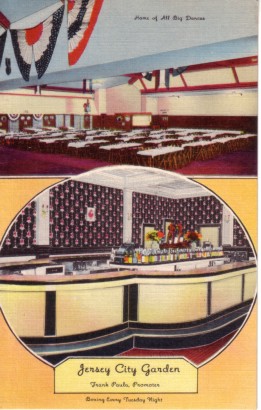 |  |  |
|
| ||
 |  |  |
 |  |  |
|
| ||
 |  |  |
|
|
From Historic Roadsides of New Jersey by The Society of Colonial Wars in the State of New Jersey, 1928
Edited by GET NJ, COPYRIGHT 2002
Gloucester County, which originally included Camden
and Atlantic Counties, is bounded on the northeast by Camden
County; on the southeast by Atlantic County; on the south-west by Cumberland and Salem Counties and on the northwest
by the Delaware River.
Points of interest:
CLARKSBORO
SWEDESBORO
On Salem Road, Swedesboro, just after entering town,
Trinity Episcopal Church, built by the Swedes on land purchased in 1703, consecrated June 17, 1705, rebuilt about 1786.
The Swedish naturalist, Kalm, spent one winter at Swedesboro
where he preached in this Church. Nicholas Collin, last of
the pastors sent over by King of Sweden, was pastor here during Revolution. Subsequently he became pastor of Old
Swedes' Church, Philadelphia. The Right Reverend John
Croes, first Episcopal Bishop of New Jersey, preached here one
hundred and twenty-five years ago, then being rector.
In the Cemetery of Trinity Church are buried Colonel
Boddo Otto, Colonel Thomas Heston, Colonel Robert Brown,
Captain John Daniels, and others of Revolutionary fame.
Passing through Swedesboro to Battentown or South
Swedesboro, one comes to the house of John Hatton, Local
Stamp officer of Salem and Revenue Collector of West Jersey
under George III, who became a fugitive, joining the royal
army. His property was confiscated in 1778.
Stratton Mansion, built in 1784, by Dr. Stratton, birth-
place of Charles C. Stratton, member of Congress and sixteenth Governor of New Jersey. House now owned by de
scendants of James Gibbs. The Stratton house is back from the
main road where the Old Kings' Highway used to run.
PORCH'S MILL
On the road from Hendrickson's Mill to Bridgeport, half
way between Bridgeport and Swedesboro, is Adams Meeting
House, formerly known as Old Stone Church or Oak Grove
Church, built 1793. Said to be oldest Methodist Episcopal
Church in New Jersey.
On the Delaware River just off the road from Paulsboro
to Thoroughfare, about one-quarter mile from Paradise Station, is the home of Tench Francis, one of the founders of the
University of Pennsylvania and an associate of Benjamin Frank,
lin. Cannon were placed in his farm yard during a fight with
the British ships.
GLASSBORO
BILLINGSPORT
On March 15, 1778, Colonel Mawhood landed at Billingsport and marched up Salem Creek to Mantua Bridge and
on the 16th fought the militia who retreated to Tomkins Farm
where they halted and fought until forced to retreat to the
vicinity of Colonel Boddo Otto's residence near Mickleton.
MANTUA
Gloucester County was created 1686 and included the
territory lying between Pensauken and Oldman's Creeks. It
was organized May 26, 1686, at Axwamus, now Gloucester.
The courts sat alternately "at Axwamus and Red Bank." In
1837 Atlantic County took a large part of Gloucester County,
and in 1844 Camden County was formed out of another portion of Gloucester County.
Points of interest are:
WOODBURY
Settled in 1684 by John Wood of Lancashire, England, for whom the town was named. Woodbury
was occupied briefly in the winter of 1777 by Lord Cornwallis
with an army of British troops and subsequently by the New
Jersey Militia.
NORTH WOODBURY
On Main Street -- The graveyard
and site of Presbyterian Church acquired August 10, 1721.
Many Revolutionary Soldiers are buried in this graveyard. The
log church on this site was used as a hospital by the Continental
troops following the Battle of Red Bank.
Three and one-half miles from Woodbury.
Residence of Nathan P. Hoffman, in Colonial days, "Death of
the Fox Inn," rendezvous of Gloucester Fox Hunting Club.
MICKLETON. On the farther side of Mickleton, the residence of Colonel Boddo Otto of Revolutionary fame.
On Raccoon Creek, was settled by the
Swedes about 1642. The British, during the Revolution,
burned the school-house.
Three miles below Swedesboro, on the
Kings' Highway to Sharptown. Site of Moravian Church,
built of brick, dedicated 1786, replacing log church dedicated
August 31, 1749. Gloucester County Historical Society
placed a tablet on Church August 31, 1907. A skirmish occurred with the British near the Church June 12, 1778.
Ten miles southeast of Woodbury. Settled
during the Revolution by Stanger & Company, composed of
seven brothers from Germany, who established a glass factory.
They had been originally at Wistar's Glass House in Salem
County. The first successful manufactory of its kind in North
America. It is said that the First City Troop of Philadelphia
was formed in the house of the late Isaac Moffott.
On the Delaware River. Some say it was
named after Edward Byllynge, purchaser of Lord Berkley's
moiety of the Province. Site of a Revolutionary Fort constructed for the purpose of preventing the British fleet from
communicating with Philadelphia. Billingsport was acquired
by the Thirteen United Colonies July 5, 1776, destroyed by the
British September 30, 1777. Cornwallis landed and made second attack on Red Bank November 18, 1777. Billingsport was
occupied by New Jersey Militia during the War of 1812.
Just beyond Mantua on Mantua Creek is the
Hendrickson Oak, the largest in New Jersey. Until a few years
ago the Tatem Oak, near by on the same stream, was reputed
to be the largest and oldest oak in America. It was conservatively estimated to be over eight hundred years old at the time
of its accidental destruction by fire.
|
The Historic Roadsides in New Jersey Table of Contents |
|


|
UrbanTimes.com |